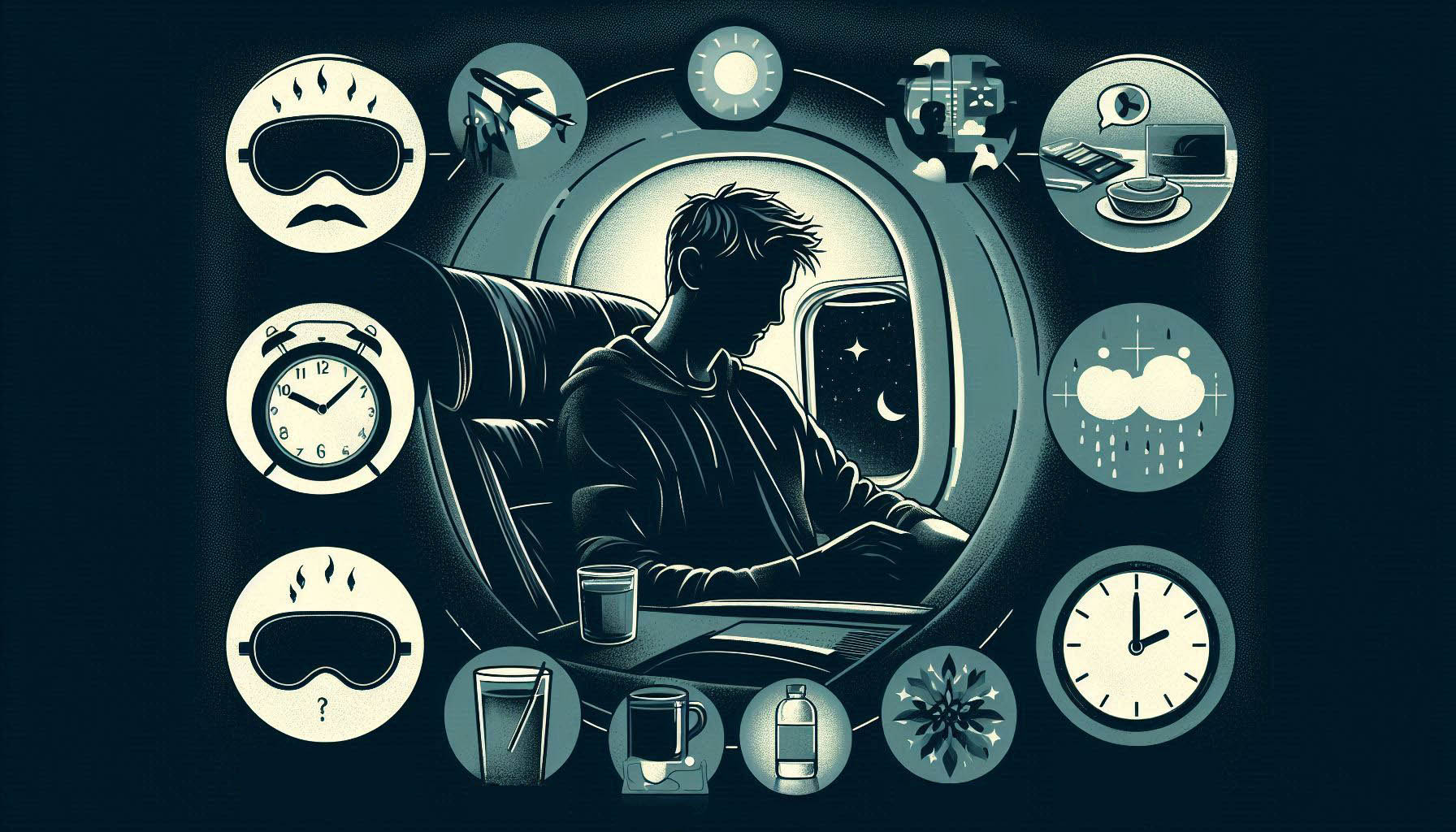The Impact of Red-Eye Flights on Your Health and How to Cope
Essential tips for beginners.
Introduction
Red-eye flights—overnight flights that leave late in the evening and arrive early the next morning—are a common choice for travelers seeking to maximize daytime hours or reduce costs. While convenient, these flights can significantly impact health, particularly for aviation professionals such as pilots and flight attendants who frequently operate on disrupted sleep schedules. The effects of inadequate sleep, irregular meal times, and prolonged exposure to artificial lighting can take a toll on physical and mental well-being.
In this article, we explore the health impacts of red-eye flights and provide actionable strategies to help aviation professionals and frequent flyers minimize their adverse effects and maintain overall aviation health.
Understanding the Impact of Red-Eye Flights on Health
- Disruption to Circadian Rhythm
The human body operates on a circadian rhythm, an internal clock that regulates sleep and wakefulness. Red-eye flights force the body to function at times it would typically be at rest, leading to fatigue, grogginess, and reduced cognitive function. Regular disruption of this cycle, as seen in pilots and crew members, can contribute to long-term sleep disorders.
- Sleep Deprivation and Cognitive Impairment
Passengers and aviation professionals alike suffer from poor sleep quality on red-eye flights. Limited space, noise, and cabin lighting make it difficult to achieve deep, restorative sleep. Sleep deprivation can lead to:
- Decreased reaction times
- Impaired decision-making
- Memory lapses
- Increased stress levels
For aviation professionals, these impairments can pose safety risks, highlighting the importance of proper fatigue management.
- Increased Fatigue and Jet Lag
Crossing multiple time zones on red-eye flights leads to jet lag, a temporary condition where the body struggles to adjust to a new schedule. Symptoms include:
- Insomnia or excessive sleepiness
- Digestive issues
- Mood disturbances
- Reduced alertness and concentration
Pilots, crew members, and frequent travelers often experience chronic jet lag, which can lead to prolonged health complications if not managed effectively.
- Weakened Immune System
Consistent exposure to high-altitude environments and fluctuating sleep patterns can weaken the immune system, making individuals more susceptible to infections. A lack of sleep reduces the body’s ability to produce cytokines, proteins that help fight off illness.
- Cardiovascular Health Risks
Studies have shown that disrupted sleep cycles and increased stress levels contribute to cardiovascular issues such as:
- High blood pressure
- Increased risk of heart disease
- Irregular heartbeat
Long-term exposure to these factors can lead to serious health concerns, particularly for those in the aviation industry who frequently work overnight shifts.
- Gastrointestinal Discomfort
Eating at irregular hours and consuming in-flight meals can lead to digestive issues such as bloating, acid reflux, and constipation. The body’s metabolism slows during the night, making it harder to digest food efficiently. This is especially problematic for pilots and crew members who must maintain focus during long-haul flights.
How to Cope with the Effects of Red-Eye Flights
- Optimize Pre-Flight Sleep
- Get adequate rest before the flight: Aim for at least 7-9 hours of sleep before a red-eye flight to reduce sleep debt.
- Gradually shift your sleep schedule: If possible, start adjusting your bedtime by an hour or two a few days before the flight to ease the transition.
- Avoid caffeine and heavy meals before bedtime: These can interfere with your ability to fall asleep on board.
- Improve In-Flight Sleep Quality
- Use noise-canceling headphones or earplugs: Block out cabin noise and chatter.
- Wear an eye mask: Reduces exposure to artificial light, helping signal to the body that it’s time to sleep.
- Choose a window seat: Provides a place to rest your head and minimizes disruptions from fellow passengers.
- Use a neck pillow: Supports the head and prevents discomfort from awkward sleeping positions.
- Stay Hydrated and Eat Smart
- Drink plenty of water: Airplane cabins have low humidity levels, leading to dehydration. Avoid excessive alcohol and caffeine intake, which can exacerbate dehydration.
- Eat light meals: Choose protein-rich and easily digestible foods. Avoid heavy or greasy meals that can cause discomfort and bloating.
- Manage Jet Lag Effectively
- Sync with the destination time zone: As soon as you board the flight, adjust your watch and mindset to the time zone of your destination.
- Expose yourself to natural light: Sunlight helps regulate your body’s internal clock and reduces jet lag symptoms.
- Consider melatonin supplements: If adjusting to a new time zone, melatonin can help signal to your body that it’s time to sleep.
- Stay active: Engage in light stretching or movement during the flight to improve circulation and reduce stiffness.
- Practice Post-Flight Recovery Techniques
- Take a short nap upon arrival: A 20-30 minute nap can help restore alertness without causing sleep inertia.
- Avoid excessive caffeine: While tempting, too much caffeine can make it harder to adjust to a new schedule.
- Engage in light exercise: A short walk or stretching session can help combat fatigue.
- Follow a structured sleep schedule: Even if tired, resist the urge to sleep at odd hours; instead, go to bed at the local nighttime to help adjust faster.
- Utilize Technology for Sleep Optimization
- Use blue light filters: Limit screen exposure before sleeping to improve melatonin production.
- Try sleep tracking apps: Apps can help monitor sleep patterns and suggest adjustments for better rest.
- Invest in a quality travel pillow and blanket: Enhancing comfort during flights makes a significant difference in sleep quality.
Conclusion
Red-eye flights are an unavoidable aspect of aviation, but their negative impact on health can be managed with the right strategies. Whether you’re a frequent traveler, pilot, or crew member, prioritizing aviation health through proper sleep hygiene, hydration, and strategic scheduling can significantly reduce fatigue and long-term health risks.
By understanding the effects of red-eye flights and implementing these coping strategies, aviation professionals and travelers alike can maintain optimal well-being and ensure safer, more comfortable journeys. Prioritize your health, stay well-rested, and fly smarter!




